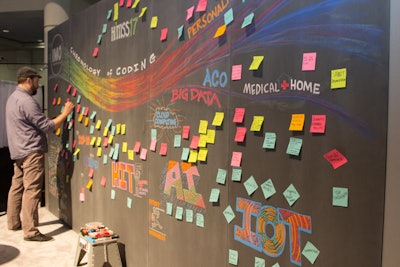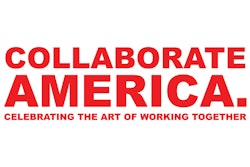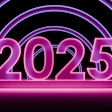
David Adler (@DavidAdler) is the C.E.O. and founder of BizBash.
Today, the smartest organizations have moved their event planners into the C-Suite. Being an event organizer for a company, association, nonprofit, political campaign, or the government is now one of the most visible jobs in any organization. To create effective events, executives take the role more seriously than ever. It’s undeniable that events mobilize people, but there’s also a risk if they are not handled with smart strategy and precise execution.
Everything is on the line, all the time, for the event department. It’s no longer just about “logistics.” Event and meeting professionals need to be true strategists, and what I call “collaboration artists.” They need to truly understand how people gather, learn, and stay energized to interact and spread ideas. “Event thinking,” the organized gathering of humans on a temporary basis, is a primary key to amplification, and commerce can be at the heart of both innovation and organizational pride. Those elements lead to enthusiasm and energy, and become the key to unique selling propositions for everything from commerce, ideology, and entertainment.
With more than 2.5 million annual users, BizBash has become the largest website for news, information, and resources for the event industry. The types of events that belong in that industry include everything from meetings and conference to incentives and trade shows to weddings and personal celebrations of all types.
The reason for BizBash’s growth has been the thirst for new ideas and best practices, and the acceptance of events as an important strategy. I credit our success over the past decade with dynamic change in both what the world considers to be an event, and with the acceptance of the art form of live human gatherings as a way to spread ideas effectively and to capture the attention of groups in an attention deficit-challenged world.
Finally, after years of not being taken seriously, event organizers and marketers are getting scientific proof that backs up our instinctual verification. With the use of techniques like “sociometrics studies” that map patterns of communications from places like MIT’s Human Dynamics research group, definitive statements that “the most valuable form of communication is face-to-face and that email and texting are the least valuable” are now the standard way to look at our industry.
In his groundbreaking book Social Physics, How Social Networks Can Make Us Smarter, MIT’s Human Dynamics Lab director, Sandy Pentland, has created an event organizer’s bible for smarter face-to-face events, using multiple sociometric studies that I encourage any serious event organizer to check out.
As an event geek, my perspective is that Pentland and his team have justified what event professionals have believed for years—that when humans come together effectively, the sum becomes so much greater than the parts. Interactions multiply, organizations move to action, and ideas move forward. Pentland’s work dovetails with concepts like the new tribalism that Seth Godin describes in his book Tribes, which argues that a fractured media environment means smaller niche-interest groups. I believe these ideas have given our industry more credibility than ever.
Events work when they impact how we feel, set the stage for learning, or create cues to allow us to interact with others. Moving into the digital age, people felt that relationships would be forged and nurtured online, replacing face-to-face interaction. Now we know that like a great orchestra, it’s the combination of both digital and face-to-face interactions that creates an algorithm for effectiveness. Event organizers, C.E.O.s, marketers, HR executives, politicians, and educators are thirsty for ideas on how to engage attendees.
It’s only now that all of the disciplines are looking at each other to see what is effective and what is not. BizBash’s purpose all along has been to allow all different types of organizers to “peek over the fence” to see what others are doing. When BizBash started in 2000, our mission was to show the world that events and meetings matter, and now our mission is to show the world not only that they matter, but they are one of the most efficient amplification tools that can be used to reach not just the attendees, but thousands and millions who did not attend via social media or word-of-mouth on steroids. Every attendee is now a storyteller and media outlet for their friends. The strategy is known as “attended by few, experienced by many.”
Another trend that is impacting the event industry is that with the emergence of working from home and large global mergers, we are seeing the rise of the temporary workplace. For some, just spending the day at the office is an event, and for others changing the daily setting in a new high-performance collaborative settings is sparking innovation that revolutionizes organizations and their impact. Event organizers are at the forefront of this movement, with the rise of internal event departments becoming more critical than ever.
It’s also important to note that with the dissipation of mass media, the event venue has become the new town square. Convention centers, banquet halls, venue spaces, and conference centers are where ideas are shaped and serendipity explodes. It’s now critical that they be used to make it easier for people to interact and perform—always studying how social physics will impact everything, from the shape of the tables and the chairs to how the food and beverage will serve the needs of the participants.
With the morphing of the event industry, today’s pairings are not just food and wine but event types. Here are just a few examples of the type of things that event pros wouldn't have considered even just a few years ago.
- Conferences are recognizing that what happens in the hallways may be as important as what happens in the meeting and session rooms.
- Galas and fund-raisers are being infused by more participation to help a cause directly at events, and experimenting with things like asking guests to write a note to a beneficiary whose photo is at your placecard.
- Companies are creating massive training events and adding communal events like concerts.
- Internal company events are being used to amplify loyalty, where even offering free lunches becomes a productivity tool enabling more interaction.
- Large global meetings have become on-demand strategy sessions that actually change the direction of a company.
- Even what could be considered dull “scientific” niche meetings are taking a page from marketing activations to make their events more engaging.
- Industry sales initiatives are using consumer-event festival tactics.
- Trade shows are morphing into temporary marketplaces that are direct to the consumer.
- Social events like weddings and business events are borrowing techniques and ideas from each other, like more enhanced networking and better guest experiences.
For many years social planners were looked down upon by corporate planners, marketing experts thought meeting planners worked on a less-sophisticated level, and trade show planners felt superior to event planners. Now, corporations will turn to wedding planners after being exposed to new thinking in human gatherings from going to a wedding. What is happening between the events, on the buses, in the hallways, at the dinners, in the airports, and before and after the event is becoming the hidden gold that is now recently being discovered.
BizBash has grown because the industry we cover has a completely newfound importance. We are not “party planners" any more, but programmers of human interactions, whether at a wedding celebration or a climate summit. Being a great event organizer is the secret weapon for everyone from smart C-level executives and politicians to marketers and even the President of the United States.



















